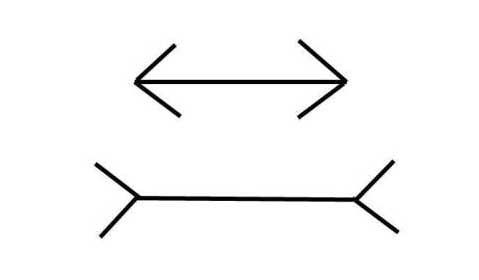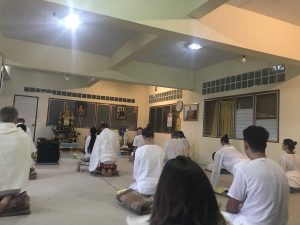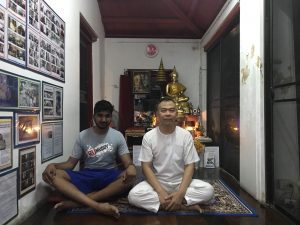Human Consciousness
Life without any of our five senses wouldn’t feel like life at all. We are constantly bombarded by sensory stimulation. The smell of flowers, the sight of a sunset and the taste of an overcooked meal; Senses are the soldiers that feed our brain information. Though senses are arguably our biggest gift in life, they also can guide us in the wrong direction if we don’t understand how they are processed in our minds.
To understand how senses feed us information we must begin at the basic core of human consciousness. This can be explained in 5 aggregate steps of thinking.
1. Interaction with the Object World:
Our body interacts with an object in the world around us via our senses. We can define an object as simply anything real in the world: A smell, sound, house, dollar bills, or really anything that isn’t created in your head.
2. Sensation
Our interaction with the objects in step one creates a sensation. Sensations are not to be confused with emotions. There are only 3 sensations one can feel, positive, negative and neutral. At every moment in life, we are feeling one of these three at varying degree levels.
3. Reaction
These sensations then cause some kind of reaction in us. Either a physical action like jumping out of a chair and/or a emotional one such as happiness. The reactions we feel can vary depending on the context in which objects are presented to us. For example seeing happy people owning a big houses might make you more jealous than seeing sad people owning a big house.
4. Interpret and Labeling
The mind interprets the sensation and reaction (steps 2 and 3) with the object (step 1) and stores away this information. A simplified example of this is: I saw a big house (Object). The house was a pleasant sight (Sensation) The big house made me happy( Reaction). Big houses = happiness so I want a bigger house.(Interpretation).
5. Consciousness
We consciously experience the object world using previous interpretations stored in our memory bank (like in step 4). Our memory bank alters our experiences and limits our ability to see an object for what it really is. For example, as we drive by a big house instead of seeing it as a visually appealing structure that creates a positive sensation in us, the brain digs into its memory box and reminds you that the Big House = Happiness. This may get you feeling envious or upset at your small house. Soon, a big house changes from a visual spectacle to a bag of mixed emotions that range from happy to jealous to determined. No longer is a big house just a house, it means more to you.

These 5 steps are known as five aggregates that make up human consciousness. Consciousness (the 5 steps), is what separates humans from many animals. Humans have the ability to bring meaning and life into an object in any way that we wish. These five steps are constantly at work and determine the way we see the world in front of us. No two people are exposed to identical sensations with identical context; Thus no two people are consciously identical. All 7 billion people in the world can look at an identical object and see it in 7 billion different lights with varying emotions, reactions, and actions.
Flaws with Object Happiness
So why is this all so important? Well, when you rely on the world objects for your happiness you play into some of the brain’s biggest weaknesses. These weaknesses cause an emotional roller coaster in your life that put your body through more than it needs to go through. Let’s take a look at some of these weaknesses in more detail:
1. Belief in Instincts
We tend to follow our mind’s instincts as if they are concrete facts. Need proof? For any adults reading this, think back to your high school days. At that point in time how sure were you that all you needed in life was to get into a good college, graduate, and get a job to be happy? I bet most people can relate to this thought. Go back to the present time and think about how much more you now feel you need. Maybe its a raise, a bigger house or more job recognition. The thing is your brain’s instincts can and will fool you into thinking it needs certain objects in the world to be happy. In reality, most of them don’t suffice in the way we thought. This is also known as Impact Bias or tenancy to overestimate the impact something will have on us.
2. Reference Point
Part of what creates false instincts is reference points. The way we see things determines how much we want it. A person living on the streets might view a one-bedroom house as a bigger luxury than a person who watches celebrities and their mansions on TV all day. Our reference points always change and thus what objects we need always change. Remember the joy of your first paycheck? Would it still bring you the same joy when compared to your new salary?

3. Hedonic Adaptation
Hedonic Adaptation is simply the tenancy of our mind to become accustomed to what it has. Have you ever been excited at a new piece of furniture only to barely recognize it years later? The reason for this is because our brains simply adapt to whatever it has as the new normal. The richer we get the more we view that as the new norm and the more we need something else to bring us new happiness.
Putting it Together
Taking these 3 flaws of the human mind into consideration, it is clear that finding an object or set of objects that make and keep you happy can be very difficult if not impossible. We may pursue the wrong things because our instincts are wrong. We may change our reference point and view what we have differently. If neither of those things happens, it is almost certain that we will eventually become accustomed to our objects and the joys it provided us will fade. All these mindset shifts cause emotional roller coasters within us. Our happiness is always shifting as we obtain and need new objects throughout our life because our life never seems to have “enough”.
Internal Happiness
So if not object happiness then what kind of happiness? Well, there is a second kind of happiness that may seem more foreign to us and that is internal happiness. Internal happiness is all about creating happiness with the things you have around you. Instead of focusing on objects you do or don’t have you can focus on the sensations you feel in the moment and find happiness in them.
This is important so let me state this again: Internal happiness is created, object happiness is obtained.
Why is this kind of happiness so important? Because when you can create happiness it stays with you no matter what you have in life. It’s a mindset that is always with you and can be applied anytime and anywhere. The concept sounds great, but in reality, it is one that can be hard to put into practice. So often we want to enjoy something for what it is, but object happiness comes in our way. We may want to enjoy the sounds of a rainy day but we can’t help but think about how much better life would be with that beach house in sunny Florida that we always wanted. That beach house (object) distracts us from the current moment and joys we could be otherwise feeling. In essence, we cannot enjoy the sensations of the rainy day because we are thinking of other object desires.
What You Can Do
Internal happiness starts with understanding the connections we have made to objects of the world. When we understand how we create desires and dependencies, we can make it work to our advantage, not against. For example, when you recognize why it is you feel you need a bigger house, you may be able to control the jealousy you feel when you see one. Now, the next time you step into your friend’s huge home you may be able to enjoy more of its beauty as opposed to thinking about how you can get one too.
One of the best ways to understand your connections to the object world better is through Vipassana Mediation. Vipassana meditation is done in silence without guided steps or calming music. People struggle with this concept of silence because they feel it is harder to stay calm. They get frustrated with the way their mind wanders and get tired acknowledging their inner thoughts. But Vipassana meditation techniques aren’t created with the sole purpose of just staying calm. Instead, it is built on the idea that to truly be calm you first need to understand your brain. Hence the lack of guides or music.
No distractions means more opportunities to see your brain at work, more opportunities to see where it wanders and more opportunities to see what it desires. In essence, you are taking the time to see the brain and its 5 steps at work from a third-person perspective. I was able to see this (to some degree) during my meditation retreat. At first, I struggled heavily to deal with all the things I didn’t have: My phone, food, music, and so much more. Eventually, however, I was able to see why my mind wanted these things. I could see how my mind processed those 5 steps and why I felt I needed the things I missed. Before long I began to limit the distractions these object created and instead shift my focus on the things I was feeling at the current moment. I found joys in my breath, the sun and the fresh mountain air among other things.
The retreat was proof to myself that by understanding and controlling my flow of consciousness I could create happiness instead of having to obtain it. Meditation and researching your own brain will help you see this as well. It doesn’t come overnight but nothing in life does. Stick with the process and you will equip yourself with the ability to see and enjoy things for what they really are.
Bonus: Object Happiness and COVID-19

As with lesson one, I am adding a quick section on how this lesson can be applied to Covid-19.
One of the toughest things to handle during this crisis is the loss of the things we depend on to make us happy. It could be parties, work, the park, or time with friends. Though I understand the struggle of it, I think it is all the more reason to work towards a goal of internal happiness. Life can be cruel and take away things unfairly. The thing to remember is, you will never be able to control life, you can only control how you respond to it. The best way to fight off the sadness of the things you don’t have is to start finding happiness in the things you do have.
Start meditating and start seeing how your mind works. It wont change overnight but slowly you will begin developing an understanding of your brain from a third person perspective. Once you see it this way you will have more control in the way you analyze the world’s objects. At this point life is at your mercy not the other way around. You will have the ability to create happiness from within by finding joy in the sensations of the current moment. The more you work on this the less life will get in your way. Not even a world pandemic will stop you or your ability to find happiness. It sounds crazy I know, but trust me when I say it is possible to find happiness with the things you have.




Loved the concept of object Vs. internal happiness. Really makes you think about the things that have been influencing you to make certain decisions!
It was perfect the first time. I learn so much from you as well! Keep it up great post.
Thanks Ghulam! What was perfect the first time?
Pingback: Vipassana Meditation Retreat: The Most Important Week of My Life - Earth's Corner
Pingback: How To Live a Better Life - Earth's Corner